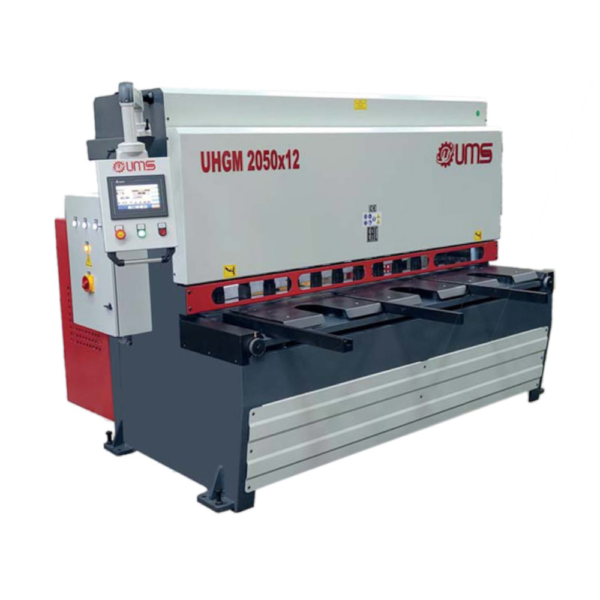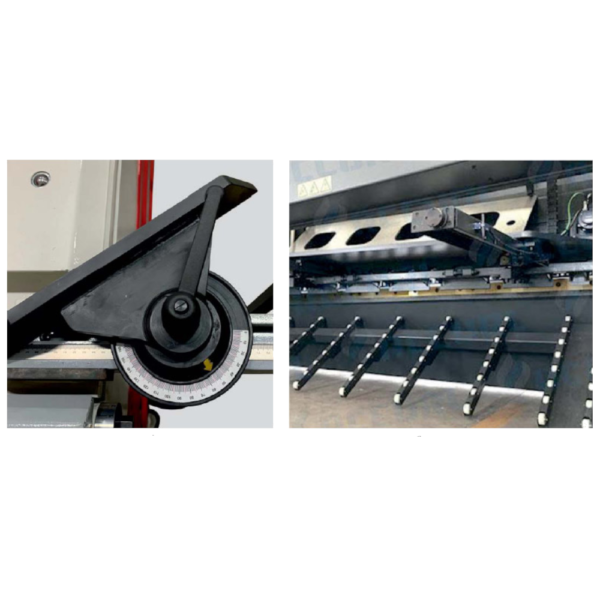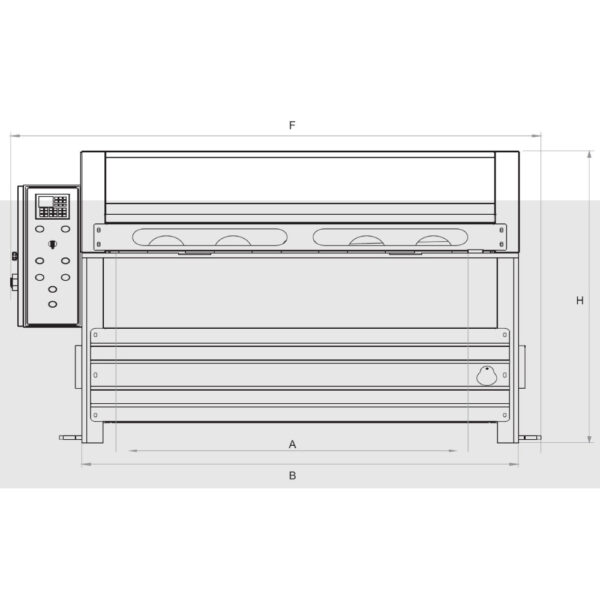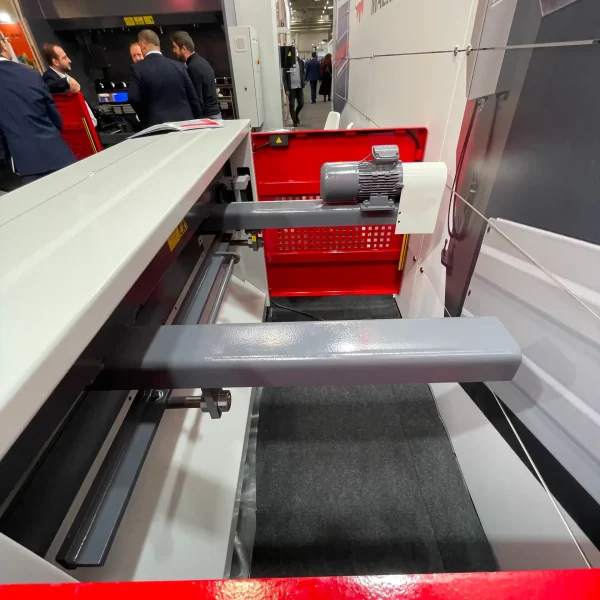
Shear metal cutting machines have been used for over a century, with early versions of the machine dating back to the late 1800s. The first shears were powered by hand or foot-operated levers, and were used primarily for cutting sheet metal and other thin materials.
As technology advanced, shear machines were developed that used hydraulic or pneumatic power to increase cutting force and speed. These machines were used for cutting a wider range of materials, including thicker metals and non-ferrous materials.
Today, shear metal cutting machines are used in a wide range of industries, including metal fabrication, automotive manufacturing, and aerospace engineering. They are available in a variety of sizes and configurations, from small hand-held shears to large industrial machines that can cut through thick metal sheets.
Advancements in computer numerical control (CNC) technology have also enabled the development of automated shear cutting machines that can perform complex cuts with high precision and repeatability, further increasing the efficiency and versatility of these machines.
We provide sales and after sales services to North American customers, for more information about the company please visit website.
What are the advantages of using a shear machine vs manual shearing?
- Speed and Efficiency: Shear machines are faster and more efficient than manual shearing, as they can quickly cut through large sheets of metal with minimal effort from the operator. This can help increase productivity and reduce labor costs.
- Accuracy and Precision: Shear machines are designed to make precise and accurate cuts, ensuring that each cut is uniform and consistent. This is especially important for industries such as aerospace and automotive, where precision is critical.
- Safety: Shear machines are typically equipped with safety features such as guards and emergency stops to prevent accidents and protect operators from harm. Manual shearing can be dangerous if the operator is not properly trained or if the material being cut is too thick or hard.
- Reduced Material Waste: Shear machines are designed to maximize material utilization, reducing waste and saving money on materials. Manual shearing can result in uneven cuts, which can lead to increased material waste.
- Flexibility: Shear machines are versatile and can cut a wide range of materials and thicknesses, making them ideal for a variety of applications. Manual shearing, on the other hand, is typically limited to thin materials and simple shapes.
Overall, shear machines offer significant advantages over manual shearing, including increased speed, accuracy, safety, and flexibility. This makes them a valuable tool for a wide range of industries and applications.

Servo support for the sheet metal
Servo support for sheet metal in a shear provides several benefits:
- Improved Cutting Accuracy: The servo system provides precise and accurate control over the position of the sheet metal, ensuring that it remains perfectly aligned during the cutting process. This helps to eliminate errors caused by sheet movement, resulting in more accurate and consistent cuts.
- Reduced Material Waste: By keeping the sheet metal properly aligned, the servo support system helps to minimize material waste caused by incorrect cuts or scrap. This can help to reduce costs and improve overall efficiency.
- Faster Cutting Speeds: The servo system can move the sheet metal more quickly and precisely than manual or mechanical systems, allowing for faster cutting speeds and improved productivity.
- Improved Operator Safety: Servo systems are often equipped with safety features such as light curtains and emergency stops, helping to protect operators from accidents and injuries.
- Flexibility: Servo support systems are often programmable and can be easily customized for different cutting applications and sheet sizes, providing greater flexibility and versatility than manual or mechanical systems.
Overall, servo support for sheet metal in a shear provides several benefits, including improved cutting accuracy, reduced material waste, faster cutting speeds, improved operator safety, and greater flexibility. This makes it an important technology for sheet metal cutting applications in a variety of industries.

Small layout yet giving straight to manufacturing
Along side of some other machine needed in a manufacturing facility either a mechanical or hydraulic shear always going to take it place.
In a custom metal shop, there are several machines that are essential for efficient and high-quality fabrication of metal parts and products. Some of the must-have machines include:
- CNC Plasma Cutting Machine: This machine uses a high-energy plasma torch to cut through various metals with precision and speed. It is ideal for cutting intricate shapes and designs in metal sheets.
- Laser Cutting Machine: This machine uses a focused laser beam to cut through metal sheets with high accuracy and precision. It is ideal for cutting complex designs, patterns, and shapes.
- Press Brake: A press brake is used for bending and shaping metal sheets into desired shapes and angles. It is essential for creating complex and precise parts and products.
- Shearing Machine: This machine is used for cutting metal sheets into desired sizes and shapes. It is essential for cutting sheets to the proper length and width before fabrication.
- Roll Forming Machine: This machine is used for shaping metal sheets into curved or cylindrical shapes. It is essential for creating parts such as tubes, pipes, and other rounded components.
- Welding Machine: Welding is an essential part of metal fabrication, and a welding machine is needed for joining metal parts together. There are various types of welding machines, including TIG, MIG, and Stick welders.
- Deburring Machine: This machine is used for smoothing and cleaning the edges of metal parts after cutting and shaping. It is essential for creating high-quality, finished products.
Overall, these machines are essential for a custom metal shop to efficiently and effectively fabricate metal parts and products. Investing in these machines can improve productivity, quality, and customer satisfaction.
What is a shear metal cutting machine ?
A shear, in the context of metalworking, is a machine tool that is used to cut or shear metal sheets into specific shapes and sizes. Shears are commonly used in metal fabrication, manufacturing, and construction industries to cut metal sheets into the desired dimensions for various applications.
Shears work by clamping the sheet metal between two blades and applying a high force to cut through the metal. The upper blade of the shear is typically mounted on a hydraulic or mechanical arm, while the lower blade is fixed to the machine bed. The gap between the blades is adjustable, allowing for precise cuts of varying thicknesses.
Shears come in different types, including mechanical, hydraulic, and pneumatic shears. They can also be classified based on their capacity, with some models capable of cutting metal sheets up to several meters long and several centimeters thick.
Overall, shears are an essential tool for metalworking and play a crucial role in the fabrication of various metal parts and products.

How a shear metal cutter works? Working principles simply explained!
Shears are machine tools that use a straightforward principle of cutting or shearing metal sheets into specific shapes and sizes. The working principle of shears can be explained as follows:
- Clamping the Sheet Metal: The sheet metal is clamped between the upper and lower blades of the shear. The upper blade is typically mounted on a hydraulic or mechanical arm, while the lower blade is fixed to the machine bed.
- Applying Force: The upper blade is then moved downward towards the lower blade, applying a high force to the sheet metal. The gap between the blades is adjustable, allowing for precise cuts of varying thicknesses.
- Shearing Action: As the upper blade moves downward, it makes contact with the sheet metal and applies a high force, causing the metal to shear or cut between the two blades.
- Finished Cut: Once the cut is complete, the upper blade is raised, and the sheet metal is released.
Overall, shears work by clamping the sheet metal between two blades and applying a high force to cut through the metal. The upper blade moves downward towards the lower blade to shear the metal, and the finished cut is released once the upper blade is raised. Shears are essential tools for metalworking and are used in various industries for cutting and shaping metal sheets into desired sizes and shapes.







